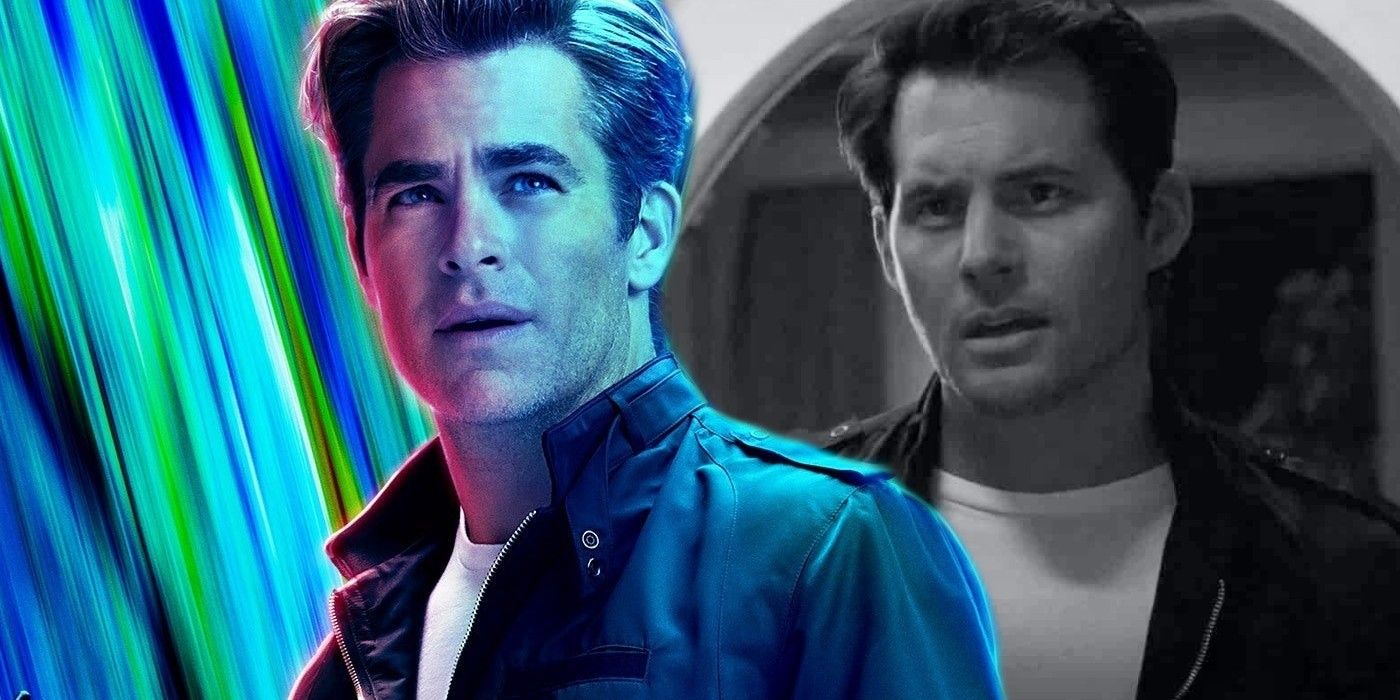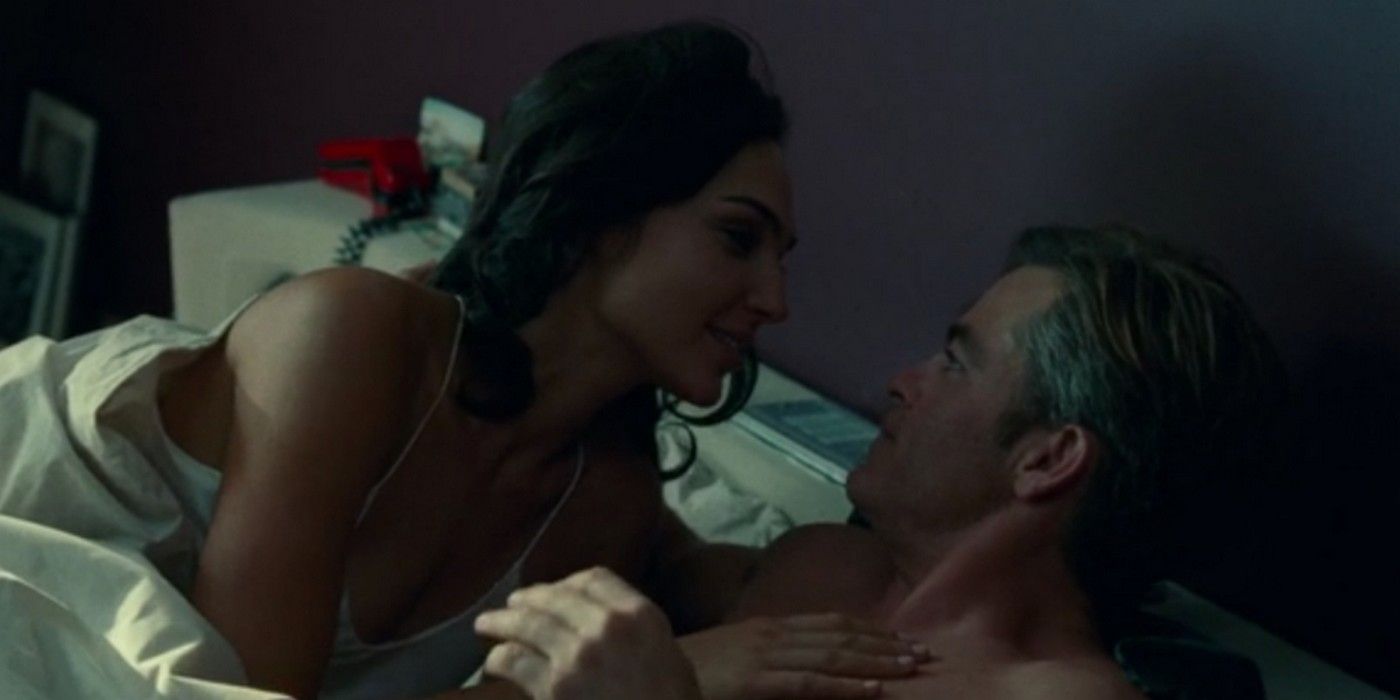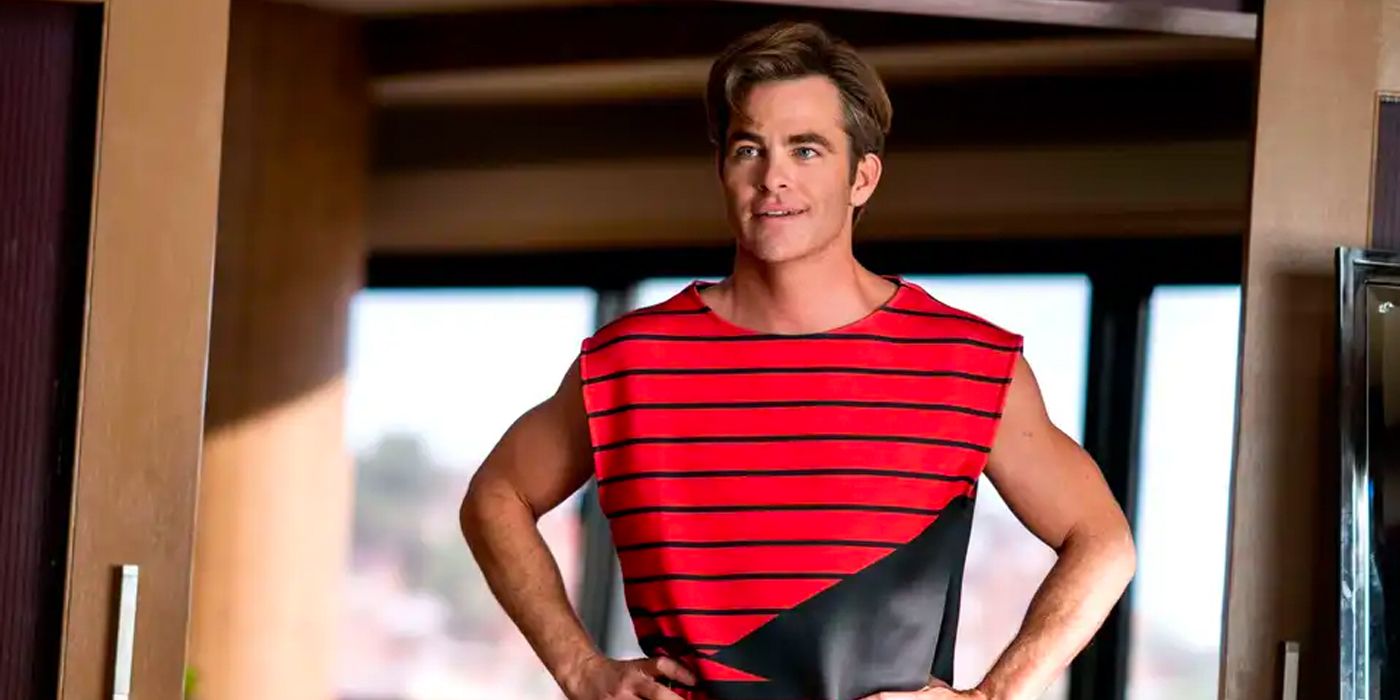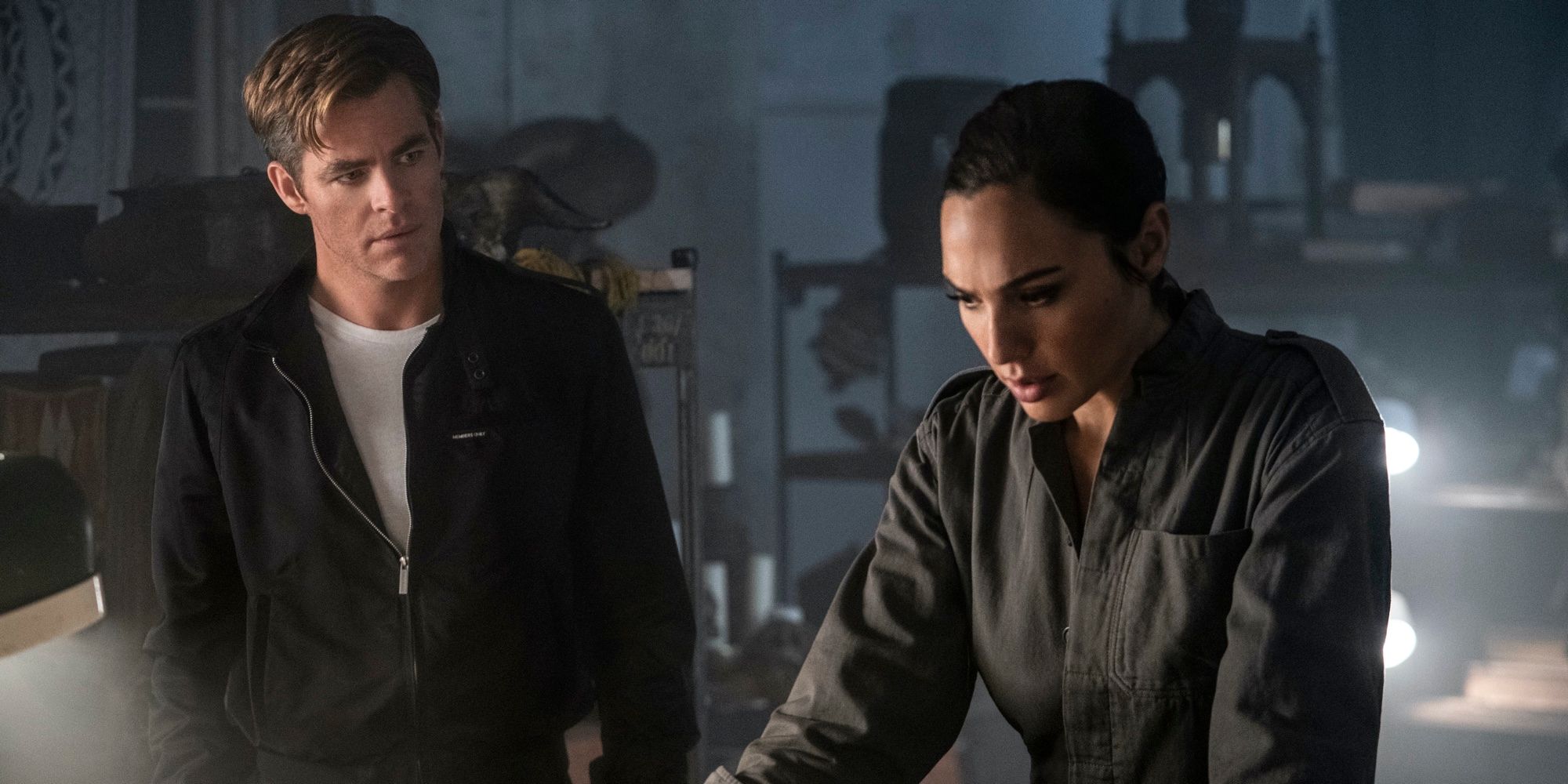
Can Steve Trevor's return in Wonder Woman 1984 be fixed? 2020 has been a year of precious few blockbusters, so when Wonder Woman 1984 was announced for a December release on HBO Max, fans were looking forward to a generous helping of superhero optimism to go with their Christmas dinners. The original 2017 Wonder Woman movie was a huge hit, with Gal Gadot arguably the highlight of the DCEU thus far. Unfortunately, Wonder Woman 1984 has failed to elicit the same unanimously glowing response. In true 2020 style, the sequel is either a joyous return to carefree superhero fun, or an unforgivable abomination that pales in comparison to the original, with little in the way of middle ground.
Wonder Woman 1984 picks up Diana Prince's story after decades living in the world of men. Working at the Smithsonian alongside Kristen Wiig's Barbara Minerva, Diana grasps the Dreamstone and accidentally wishes her ex-boyfriend back to life. Reunited with Chris Pine's Steve Trevor, the couple make up for lost time after being separated in World War I, but as Maxwell Lord continues to wreak havoc with the Dreamstone's power, and with Barbara's Cheetah transformation eroding her humanity, Diana is forced to give up Steve yet again to save the world.
Wonder Woman 1984 has faced a range of criticisms, from being much too long, to Cheetah's tired "geek into villain" trope, but the big recurring offender cited by fans and critics is Steve Trevor's storyline. While Chris Pine's presence is certainly welcome, the manner of his comeback is not only weak from a narrative perspective, but morally problematic. Here's how Steve Trevor's Wonder Woman 1984 story might've been improved.

Before Wonder Woman 1984 hit theaters (and TVs, laptops and tablets), most assumed Steve Trevor would somehow return via Maxwell Lord's Dreamstone. The Wonder Woman 1984 trailers confirmed as much by showing Chris Pine wandering through the streets of 1980s Washington DC, mistaking garbage cans for art, wearing awful clothes, and flying planes with Diana. In the final film, Steve is wished back to life accidentally by Diana before Lord gets his hands on the ancient divine rock, but the general principle is more or less what viewers expected... with the exception of one major caveat - Steve returns in the body of a random, living man.
In storytelling terms, this is far more complicated than it needs to be. Diana Prince is walking around with a completely new guy, but he's portrayed by Chris Pine because that's "how Diana sees him." Wonder Woman 1984 keeps reminding the audience that "Steve" is in a different body by showing his reflection, or bringing up "the other guy," but it's a cumbersome way of reviving a character from the dead, and fails to add anything of substance to the story. Steve doesn't take long to convince Diana of his identity, so there's no conflict there. The scenes in faux-Steve's apartment easily could've taken place at Diana's or a shopping mall, and the final exchange between Diana and the man Steve was inhabiting is of no consequence. The fact that Steve is in someone else's body has no real bearing on Wonder Woman 1984's plot, and only serves to muddy the waters of a return that should be touching and emotional, not invasive and head-scratching.
Then, of course, there's the other problem. After Diana realizes that Steve has returned, they embrace and kiss. While Wonder Woman 1984 doesn't indulge in a sex scene, the pair later wake up together, and it's clear they shared a night of passion while Steve was, and this cannot be stressed enough, in the body of another man. Obviously, this raises an issue of consent. Diana is getting physical with someone who isn't currently "there" due to Steve occupying his body, and when the Handsome Man (that's his credit) wakes up, he's none the wiser as to what happened. The implications are creepy at best, and undermine the issue of male rape at worst. In an already crazy year, who would've had Wonder Woman 1984 being sexually problematic on their 2020 bingo card?

Patty Jenkins has responded by agreeing with a Tweet that offers two defenses: firstly that Steve's return is a homage to 1980s body-swap movies such as Big, and secondly, that the sex never happened since the wish was renounced. Neither argument holds up to scrutiny. Big was released over three decades ago (and those scenes have not aged well), whereas Wonder Woman 1984 landed three weeks ago and should've moved with the times. To address the second point, no amount of wish renouncing means the events of Wonder Woman 1984 didn't happen. The Dreamstone doesn't work that way, and neither does the law.
A final (and admittedly more subjective) issue with Steve's story in Wonder Woman 1984 is how it concludes. Diana realizes she has to let Steve go before she can defeat Maxwell Lord, but their farewell scene is surprisingly abrupt. After saying goodbye, Diana just leaves Steve (and Handsome Man) in the middle of a street riot. The audience doesn't see Steve depart his vessel, but merely hear him shout "I love you" as Diana runs away.

With Steve Trevor's resurrection in Wonder Woman 1984 coming in for heavy criticism, how could his story be improved? The big, easy fix is simply not having him possess someone. Throughout Maxwell Lord's wish-making spree in Wonder Woman 1984, the Dreamstone seems to change reality, rather than conjuring wishes from nothing. When Roger the museum worker asks for coffee, for example, a colleague arrives with fresh brews, instead of a cup magically appearing in the wish-maker's hand. And when Maxwell Lord's secretary asks for help, new recruits don't appear from thin air, they're diverted from other interviews. This might provide a canon explanation as to why Steve Trevor is revived in another man's body. But let's also look at what else the Dreamstone does - dragging a giant wall from the earth, turning Kristen Wiig into a cat, bringing Steve Trevor's soul back from the afterlife, making Maxwell Lord the Dreamstone incarnate, and presumably those American nukes were magicked up from the aether. Given everything that happens in Wonder Woman 1984, it isn't a huge stretch to have Steve Trevor come back as himself, looking exactly like Chris Pine, and in a brand new body that he can do with as he pleases.
This straightforward fix addresses most of the Steve Trevor missteps in Wonder Woman 1984. The audience doesn't have the awkwardness of getting their head around the dual-identity gimmick, and there's no need for a tenuous explanation as to why Steve is still played by Chris Pine. Even better, the whole consent ordeal disappears entirely. With a new body courtesy of the Dreamstone, Steve and Diana can hump away without any murky moral ambiguities that arise from an unwitting, unconscious third party in the bedroom. Is it a little too convenient to have Steve's body and soul return as one? Perhaps, but no more so than finding Maxwell Lord's name in the Dreamstone container, or flying to Egypt in a stolen museum plane, or any of the wishes described above.
Steve's goodbye is a little harder to fix. Diana flying to the satellite base for Wonder Woman 1984's final showdown is a standout moment that requires her full power, but she can't access that power while Steve is hanging around. To conclude Steve's arc less abruptly, this paradox could be played up more explicitly in the film, with Diana trying to fly and failing. Their goodbye exchange would follow, with Steve convincing Diana that she can fly, but only if she lets him go. She does so, and soars into the air, but rather than leaving Steve leaning against a random pillar, Diana (and the audience) watch him becoming smaller as Diana gains altitude, until the distant figure collapses to the floor. Visually watching Steve vacate the body of Handsome Man provides closure for the audience, and adds more emotion to Diana's first flight. It also makes sense that Steve would watch Diana for as long as he possibly can before returning to the afterlife, rather than just hanging around in the street and shouting.
from ScreenRant - Feed https://ift.tt/3bkhYtd


0 Comments